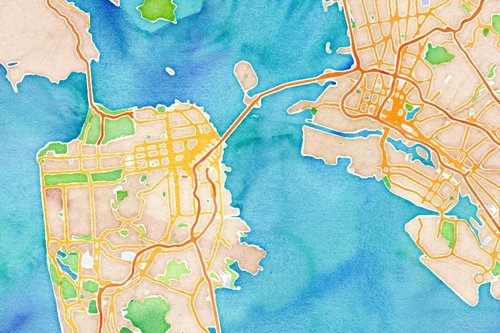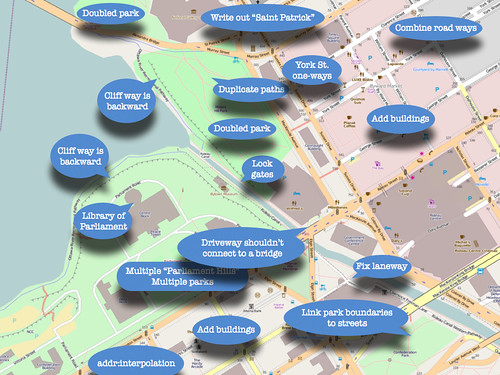When I started contributing edits to OpenStreetMap in earnest, I couldn’t help notice certain idiosyncrasies in its tagging: for example, there was a tag for brothels, which I didn’t need to use, but there wasn’t one for daycares, which in Quebec there are rather a lot of. That seemed odd. And it was indicative of a project whose contributors were overwhelmingly male. On CityLab, Sarah Holder examines OSM’s abysmally low female participation rate (only two to five percent of contributors are women), makes the case for better representation, and looks at where women are making a difference to the map. Because a map built overwhelmingly by men can have some massive blind spots.
When it comes to increasing access to health services, safety, and education—things women in many developing countries disproportionately lack—equitable cartographic representation matters. It’s the people who make the map who shape what shows up. On OSM, buildings aren’t just identified as buildings; they’re “tagged” with specifics according to mappers’ and editors’ preferences. “If two to five percent of our mappers are women, that means only a subset of that get[s] to decide what tags are important, and what tags get our attention,” said Levine.
Sports arenas? Lots of those. Strip clubs? Cities contain multitudes. Bars? More than one could possibly comprehend.
Meanwhile, childcare centers, health clinics, abortion clinics, and specialty clinics that deal with women’s health are vastly underrepresented. In 2011, the OSM community rejected an appeal to add the “childcare” tag at all. It was finally approved in 2013, and in the time since, it’s been used more than 12,000 times.
Interestingly, when you look at crisis mappers, the female participation rate jumps: to 27 percent, based on a survey of the Humanitarian OpenStreetMap Team community.





